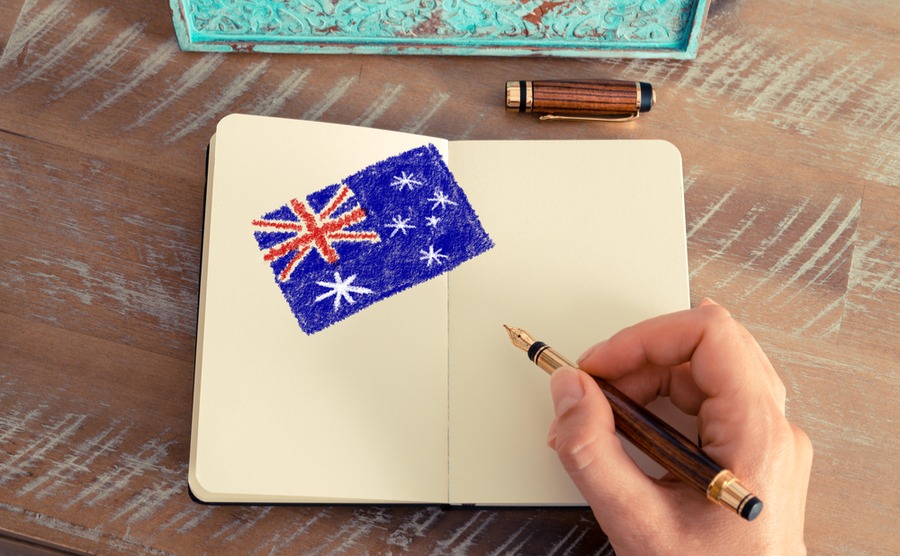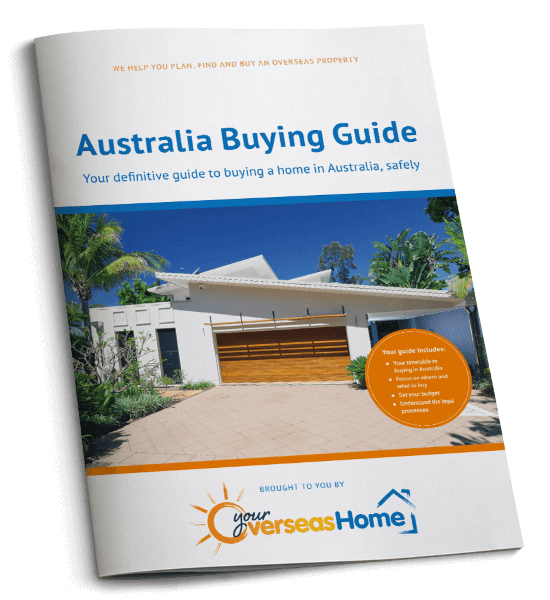Many of us are attracted to Australia by the sunny climate and plentiful job opportunities. However, before you start packing your bags, there is one hurdle to overcome. How do you get an Australian visa?
Get your free Australia Buying Guide to have everything that you need to know about buying Down Under in one place.
Who needs an Australian visa?
Anyone who’s moving to Australia who is not already a citizen, such as by descent, will require one to live permanently in the country. New Zealand nationals don’t need to apply in advance if they’re coming under a Special Category Visa (SCV). Other than Kiwis, the rest of us all need to apply for visas in advance. Here are your main options if you’re retiring or working.

There are a number of options for an Australian visa if you’re looking to work, including sponsorship and regional nomination.
Options for working in Australia
There are quite a number of different working visas for Australia, but, if you’re looking to stay permanently, you have two main routes to go down. The first is to find a job in advance and get Australian visa sponsorship from your employer. The second is to apply in the first instance for a skilled visa and then find a job.
If you already have a job offer, you’ll likely be looking at the Employer Nomination Scheme (subclass 186). This is for anyone with nomination from a local employer and who is aged under 45 and meets English-language and character requirements. If you’ve never worked in Australia before, you’ll fall into the Direct Entry subset of this visa, whereby the employer can sponsor you without needing previous Australia employment.
The Skilled Independent Visa (subclass 189) is for people who don’t already have a job offer. You will need a profession that is listed as in demand (more on this later). You must be under 45 and meet language requirements.
Finally, if you know exactly where you want to live, you can be nominated by a state or territory government. This will be for Skilled Nominated Visa (subclass 190). As with other working visas, you’ll need to be under 45. Although this limits you in geographical area, it does make application easier. You’ll have access to a more extensive occupation list, as well as further points towards your eligibility score. For example, hairdressers can’t apply under 186, but they can apply under 190.
How do I apply for a working Australian visa?
There are five key steps in applying for an Australian visa.
1. Make sure your occupation is in demand
The first thing to do is to make sure there’s a demand for you job. It’s only worth investing the time and money into the process once you’ve confirmed that your skills are sought after. First, check the combined current list of eligible skilled occupations on the Department of Home Affairs’ site. If you’re applying for regional nomination, do double-check with your chosen state or territory to see if they have further occupations in demand.
2. Have your own skills verified
Once you know your occupation is in demand, you need to prove your skills in that sector. The onus here is on the applicant to contact the relevant assessing authority. Each of them will have their own requirements for how they’ll assess it. You can find the name of the relevant authority next to the job name in the list of eligible occupations. For example, a General Electrician will need to contact the TRA.
Thinking of buying a property in Australia? Don’t miss your free copy of How to Negotiate Abroad to get the most house for your dollar.
3. Submit an expression of interest (EOI)
You then need to submit an expression of interest, or EOI. You do this through the portal SkillSelect. Your point score will be included, and this will rank you against everyone else in SkillSelect. You can see your score but not your ranking, as it constantly changes depending on the calibre of the pool of applicants. Your EOI will remain on SkillSelect for two years and you can update it as much as you want. For example, if you’ve passed a new qualification, you can add that in.
Periodically, invitations to apply (ITA) will be issued, normally to around the top 700 in the application pool. This normally happens on the 11th of each month.
4. Make your application
With an invitation to apply in hand, it’s time to actually make your application for an Australian visa. You need to do this within 60 days of getting your invitation to apply. At this point, you’ll need to show evidence for the facts you put on your EOI, such as supporting documents showing your skills.
You’ll also need to organise health checks. Although not obligatory, the Department of Home Affairs recommends that you do these in advance of applying, to avoid processing delays. They’re valid for one year, so if you do apply in advance and aren’t invited within twelve months, you’ll need to redo it.
To apply, log onto SkillSelect and press ‘Apply Visa’. You’ll then be invited to set up an ImmiAccount, if you don’t have one already. Once the application is submitted, you’ll pay the fee. These are usually the following:
| Visa type | Base charge | Additional applicant charge (adult) | Additional applicant charge (under 18) | Additional costs |
| Employer Nomination Scheme (subclass 186) | AUD3,755 | AUD1,875 | AUD940 | AUD 540 (direct entry scheme) |
| Skilled Independent Visa (subclass 189) | AUD3,755 | AUD1,875 | AUD940 | |
| Skilled Nominated Visa (subclass 190) | AUD3,755 | AUD1,875 | AUD940 |
You can pay online, with a charge for some payment methods.
You’ll receive a notification when your visa is approved – at which point you can start making travel plans to begin your new life in earnest!
What makes Melbourne and Sydney such liveable cities?
Options for retiring in Australia
Unfortunately, it’s not as simple to get an Australian visa for retirement. The only current visa of this kind is the Investment Retirement Visa (subclass 405). However, it’s not open to new applicants. If you already hold one, or you have previously held one and haven’t had a ‘substantive’ visa since moving to Australia, you can apply for renewal. This is dependent upon meeting the conditions of being 55+, having an annual income of AUD50,000pa in a regional area or AUD65,000 elsewhere and investing AUD250,000 in a regional area or AUD500,000 in anywhere else in Australia.

If you have children living in Australia, you can apply for a visa to join them.
Your other option is to apply as a dependent. If you have a son or daughter living in Australia as a permanent resident and you are of Australian pensionable age, they can sponsor you under the Aged Parent Visa (subclass 804). The cost starts at AUD4,035.
However, there can be a waiting time of up to 30 years for this Australian visa, according to the Department of Home Affairs. You can use the Parent Visa Queue Calculator to work out how long your wait will likely be.
If the majority of your children live in Australia, you can apply for the more expensive Aged Contributory Parent Visa (subclass 864). This allows you to settle in Australia permanently. You’ll need someone, usually the sponsoring child, to pay your Assurance of Support (AoS) for ten years. This is an agreement to pay back Australian welfare payments or income support throughout the period. Even if your sponsor’s relationship with you breaks down, they can’t not pay.
If the majority of your children live in Australia, you can apply for the more expensive Aged Contributory Parent Visa (subclass 864).
To apply, you’ll need to send all the required documents and Form 47 (and Form 40 for your sponsor) by paper post to the Perth Office. The address is:
Parent Visa Centre (PVC)
Ground Floor, Wellington Central
836 Wellington Street
WEST PERTH
WA 6005
Australia
After that, you’ll receive requests for an Assurance of Support, health checks and possibly biometrics.
Arriving in Australia
When you arrive at the border, bring your travel document and Incoming Passenger Card. Once you pass through immigration, you’ll be ready to start your new Australian life! If that involves buying your home Down Under, don’t miss your free Australia Buying Guide for expert, comprehensive information on purchasing here in Australia.

The Australia Buying Guide takes you through each stage of the property buying process, with practical recommendations from our experts who have been through the process themselves. The guide will help you to:






